Garden City offers lessons on educating diverse populations, study says
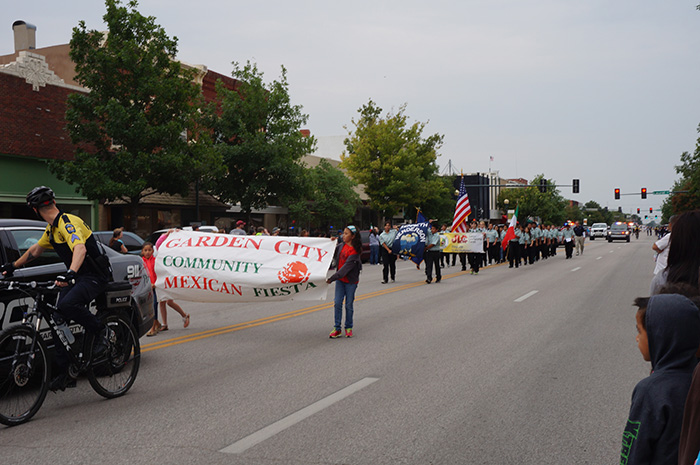
LAWRENCE — One of the most diverse towns in the United States is in Southwest Kansas. Garden City has been the site of rapidly changing demographics for more than 30 years, and a new study by two University of Kansas professors argues the examples the community has set can help educators in other culturally and linguistically diverse settings improve their own work.
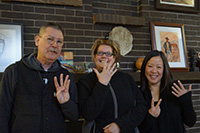 Jennifer Ng, associate professor of educational leadership and policy studies, and Don Stull, professor emeritus of anthropology, spent five months living in Garden City. They interviewed educators and community leaders, and they observed how schools taught a student population in which as many as 21 languages other than English are commonly spoken. The project, funded by the Spencer Foundation, the KU General Research Fund and sabbatical leaves, began in 2013, and the researchers recently wrote about their findings in the journal Human Organization and delivered a report to the Garden City School District as well.
Jennifer Ng, associate professor of educational leadership and policy studies, and Don Stull, professor emeritus of anthropology, spent five months living in Garden City. They interviewed educators and community leaders, and they observed how schools taught a student population in which as many as 21 languages other than English are commonly spoken. The project, funded by the Spencer Foundation, the KU General Research Fund and sabbatical leaves, began in 2013, and the researchers recently wrote about their findings in the journal Human Organization and delivered a report to the Garden City School District as well.
In 1980, IBP opened what was then the world’s largest beef processing plant in Garden City. Refugees from Vietnam and immigrants from across Latin America came seeking employment. More recently, refugees from nations such as Somalia and Myanmar have joined them. Communities across the country have had similar experiences as food processing became central to many rural economies in the 1980s and 1990s.
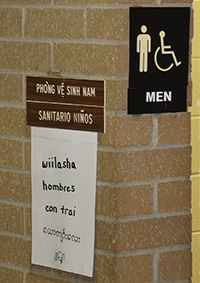 “The very existence of a place like this defies our expectations of what a rural community is,” Ng said. “And public schools are a fascinating place to explore how these changes have mattered as they’re one of the few locations where the entire community comes together. They are a place of opportunity for the community’s children.”
“The very existence of a place like this defies our expectations of what a rural community is,” Ng said. “And public schools are a fascinating place to explore how these changes have mattered as they’re one of the few locations where the entire community comes together. They are a place of opportunity for the community’s children.”
Stull and Ng interviewed teachers, administrators, school board members and school personnel at each of the district’s 18 buildings, as well as personnel at Garden City Community College and local community service providers. From their interviews and observations, they prepared a report on the district’s strengths in education and areas for continued improvement as it serves an ever-changing population. They will present their report to school administrators Dec. 15 and 16.
“We believe it’s not enough to simply go into a community and learn from them, we are also obligated to give back,” Stull said.
Among their recommendations, the authors suggest taking a closer look at teacher recruitment and retention. The district faces geographical challenges in recruiting new teachers to the area, and like the meatpacking industry, it has a high turnover rate: nearly 15 percent annually. The deprofessionalization of teaching and declining morale among educators are contributing factors as well. The recruitment challenge also illustrates how teacher preparation programs at universities like KU can do more to encourage future teachers to consider teaching in rural areas.
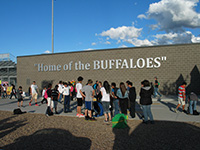 Garden City has adapted and become accustomed to change. Ng said educators often reported they had experienced diversity and related challenges for so long it was no longer novel or unexpected.
Garden City has adapted and become accustomed to change. Ng said educators often reported they had experienced diversity and related challenges for so long it was no longer novel or unexpected.
“You have new teachers educating new types of students. That gives you questions of ‘how do you educate them effectively,’” Stull said. “There can be a tendency among educators to think, ‘We deal with diversity all the time. We know how to handle it.’ We suggest not becoming complacent.”
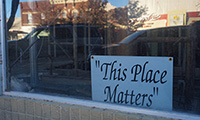 Continuing to hold diversity training sessions and orientations, and making concerted efforts to diversify teaching staff and school personnel in a district where 75 percent of students are individuals of color, would go a long way to avoiding possible complacency. The district, to its credit, does a good job with many of these efforts and has for years, the researchers said.
Continuing to hold diversity training sessions and orientations, and making concerted efforts to diversify teaching staff and school personnel in a district where 75 percent of students are individuals of color, would go a long way to avoiding possible complacency. The district, to its credit, does a good job with many of these efforts and has for years, the researchers said.
Stull and Ng observed several other aspects of Garden City’s education system that could be strengthened and serve as positive examples for schools in similar communities. One example is the effort to get parents involved in their children’s education. That is primarily done through school-based parent-teacher organizations, but the realities of parents’ work in an economy heavily dependent on meat processing can make their participation a challenge. Certain schools hold meetings in both the daytime and evening, and they provide language interpreters for individuals who do not speak English as a first language. Finding additional ways to involve parents meaningfully in schools and more evenly across the district would help, they wrote.
American education is also in an era of high-stakes standardized testing, with increasing pressures for teaching to become narrowly data-driven and “scientific.” For culturally and linguistically diverse students, such instruction and assessment practices may not accurately gauge individuals’ needs or abilities. This can lead to frustration among teachers and disagreement about how best to serve these students.
“Very often, the way children score on those tests is at variance with the teachers’ experience with them in the classroom. We’ve argued that while test scores are important, teachers’ assessments are also crucial,” Stull said. “The teachers are dedicated, there’s no doubt about that, and their insights are valuable.”
Perhaps above all, Garden City’s broad affirmation of diversity in its schools and across the community serves as the best example to others. Many educators and community members voiced their commitment to inclusive education, evidenced by multilingual signage in some schools and reciting the Pledge of Allegiance in multiple languages at others. Success, they believe, comes when someone moves to the community and decides to make it home.
“Is there room for thinking about micropolitan communities like Garden City, where the cultural and linguistic diversity commonly associated with urban places and the agricultural features of rural life are uniquely blended?” Ng asked. “There has been a focus on urban schools and rural schools in the educational research literature. But understanding a place like Garden City requires that we alter our assumptions about urban and rural differences as being categorically distinct.”
Stull agreed, saying the community’s commitment to meeting its challenges for more than three decades can serve as a valuable lesson for many.
“Garden City offers a window through which to view what’s happening in rural America. It can also serve as an exemplar for how to deal with the challenges these kinds of communities face,” he said. “They didn’t have a model for how to respond, but they have served as a model for others.”
Photos, from top:
A student group marches in the Garden City Community Mexican Fiesta Parade.
Professor Emeritus Don Stull, Garden City teacher Lynn Boitano and Associate Professor Jennifer Ng are pictured in the Garden City Public School District.
Handmade signs in different languages are common sights in Garden City schools.
Students gathering before a football game at Garden City High School.
Sign outside of The Windsor, a downtown hotel in Garden City.
Photos provided by Jennifer Ng and Don Stull.